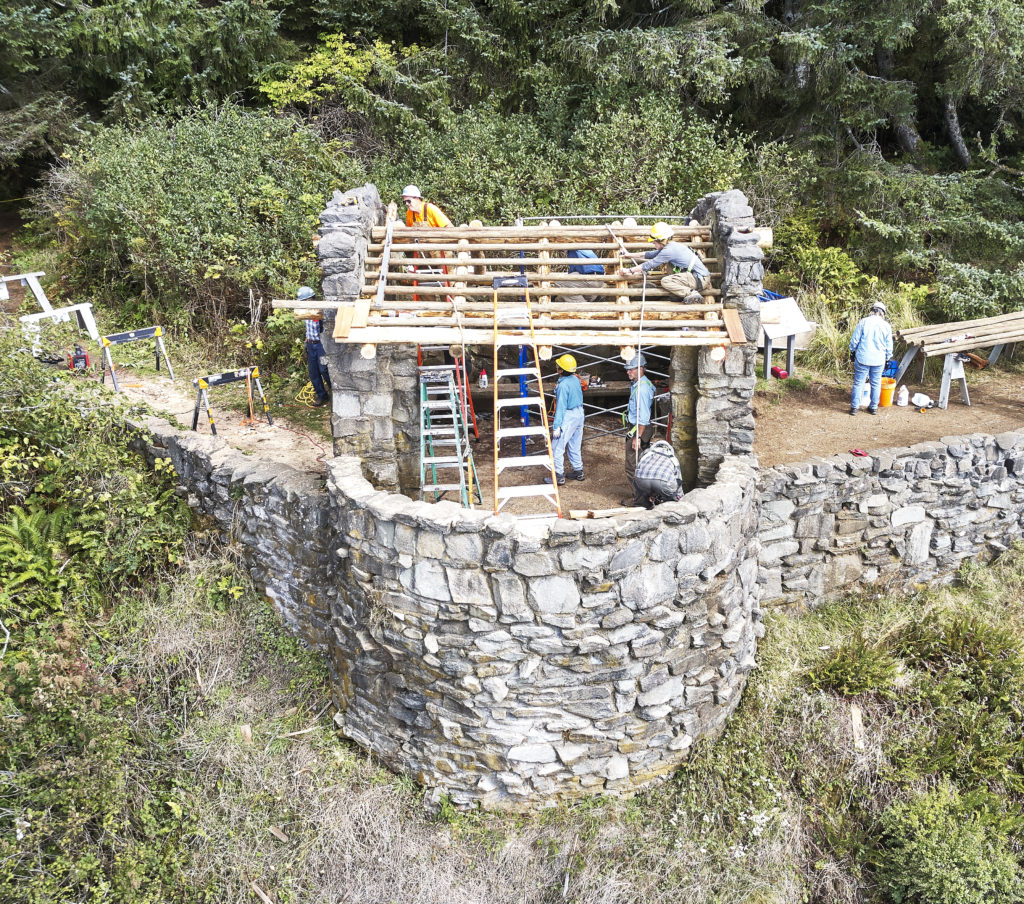
By QUINTON SMITH/YachatsNews.com
The 17-foot log rests on scaffolding 800 feet above the Pacific Ocean. A crew of retirees and Forest Service employees hefts the big log into place so it can be pushed and pulled through two 11-inch holes in the peak of the West Shelter perched high on the edge of Cape Perpetua.
Despite harnesses and straps secured to the shelter, one misstep and the log – along with Paul Spencer of California and Steve Harris of Colorado — could go over the side.
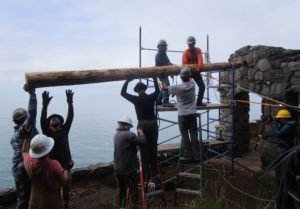
It’s been a long week for seven volunteers and two staffers with Colorado-based HistoriCorps as they replace wood beams and cedar shakes on the 85-year-old shelter.
They endured inches of rain and 50-60 mph winds the day after arriving at a makeshift camp in the cape’s upper parking lot. The storm scattered tents, shredded awnings and forced a retreat to another camp two miles below.
Along with some Forest Service help, they spent the first of the two-week project dismantling the shelter’s roof, hand-peeling Douglas fir logs for replacements, and hauling material and equipment 300 yards back-and-forth on the winding trail between the parking lot and the historic rock structure.
The $50,000 restoration is a collaboration between the Siuslaw National Forest, which oversees Cape Perpetua and its facilities, and HistoriCorps, which started in 2009 to organize volunteers to preserve historic structures on public lands across the United States.
It took much of last Thursday afternoon to get the first big log through two holes – trimming and rotating and cutting out bumps – to finally get it resting on the west wall of the shelter.
“You measure it a dozen ways – it should fit,” says Jim Lorenz of Salem, a retired high school math teacher who with his wife, Jean, have volunteered on 10 HistoricCorps projects. “But you get up there and there’s a little rock in the hole or a bump and then it won’t slide through.”
Friday morning the bigger ridge log waits to get lifted onto the scaffolding and carefully pushed through the uppermost support holes without hurting anyone at the top or people on U.S. Highway 101 below.
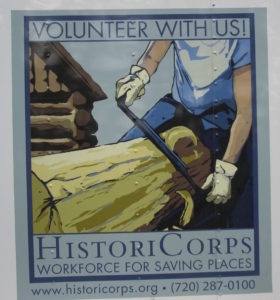
Everyone pitches in to get it into the air and onto the scaffold. Volunteers quickly scramble up ladders to square it up to the shelter wall as Spencer and Harris issue instructions from the top.
Unlike Thursday’s stubborn log beam, the ridge beam slides through the wall and into the second support hole in minutes. The danger of any missteps has passed. With little fanfare the group begins dismantling and storing equipment for the weekend, cleaning up the site before a quick lunch, breaking camp and saying good-byes.
“It was good,” Mark Hendrickson of McMinnville said of the week. “It feels like we accomplished something.”
The second week a 10-member crew of volunteers joined project supervisor Harris and HistoriCorps crew leader Molly Greenhouse to place a third log beam, assemble the roof trusses, smaller cross-beams called purlins, nail down new cedar shakes and repair mortar in places.
Harris said the first week went well, despite losing portions of two days to the weather.
“We’re almost on schedule,” he said. “But we’ll have a fuller week next week than I anticipated. It all comes down to what kind of volunteers you have. There are some projects that don’t get done on time … but I think we will.”
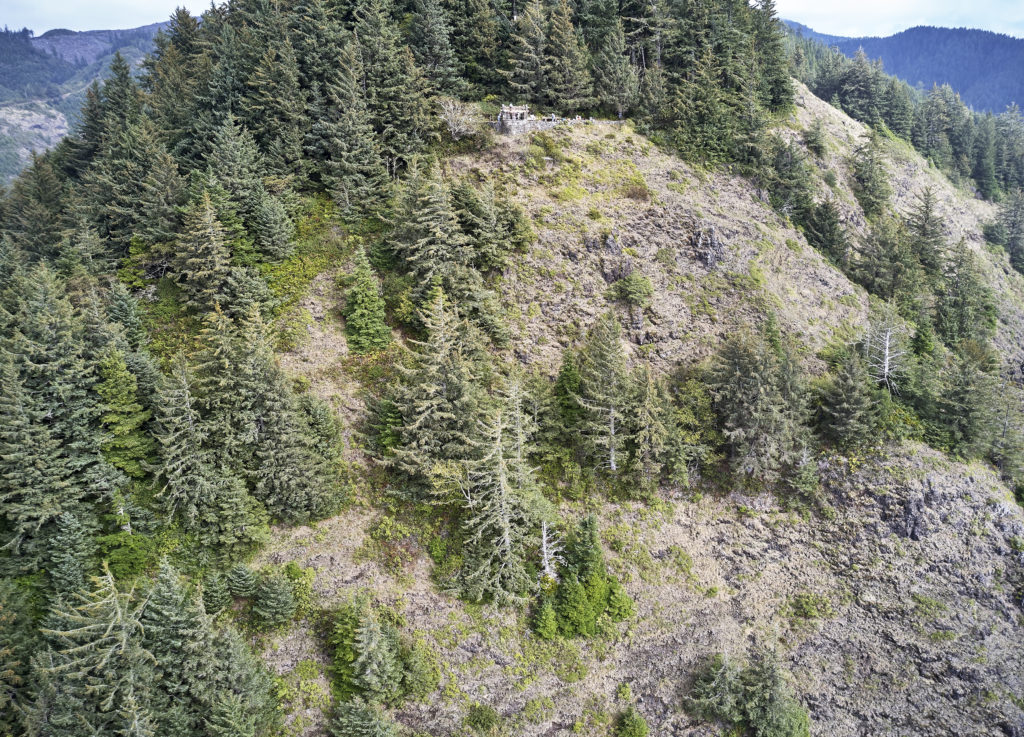
The West Shelter
The rock shelter was built in 1933 by the Civilian Conservation Corps and today is popular for its spectacular views of the Pacific Ocean. But for the fourth time in its history its wooden parts — cedar shakes and some large cedar beams — are rotting.
The CCC was part of the economic stimulus of the Roosevelt administration during the Great Depression. At Cape Perpetua, young men in the CCC built their camp near the current site of the U.S. Forest Service’s Cape Perpetua Visitors Center, and carved out a series of trails, the public campground that’s still used today and then the West Shelter overlooking the Pacific.
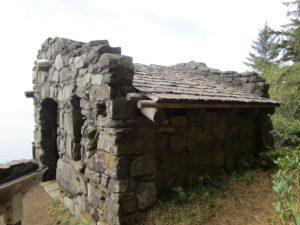
During World War II the stone shelter became an observation station, with rotating shifts watching for enemy boats or aircraft.
Based near Denver, HistoriCorps was founded 10 years ago as a nonprofit to coordinate volunteers to help preserve historic structures in public place across the country.
Kevin Bruce, an archeologist for the Siuslaw National Forest, said the agency contacted HistoriCorps a year ago to see if it would tackle the shelter’s roof replacement. It helped work out logistics and supplies – collecting logs and poles from various thinning projects – and agreed on funding.
“We’ve had a very good experience working with them,” Bruce said.
The Cape Perpetua project is one of 26 HistoriCorps is tackling this year; it completed 36 projects in 2018. It is their third project in Oregon – crews are finishing work at Silver Falls State Park near Silverton this month.
Its first Oregon project was in 2016 near Hebo in Tillamook County. That’s where many of the Cape Perpetua crews first met each other. Many volunteers also got their start with the Forest Service’s similar program called “Passport in Time.”
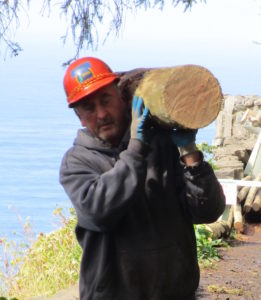
“Most people can’t take a week off to volunteer,” said first-week volunteer Kurt Olson, 67, of Lincoln City. “If you wanted to pay me to fix a roof, I wouldn’t do it. But to volunteer to do something like this and make good friends, yep, I’ll do that.”
Potential volunteers register on HistoriCorps’ website, then get notices as the organization approves and begins planning projects. Some volunteers stay close to home; others move all over the West. As volunteers get to know one another they often coordinate their projects to work together.
Brent Martin, 59, a retired veterinarian from Pella, Iowa, last week worked on a project in Colorado, got into his truck and spent the weekend driving to Cape Perpetua to work this week.
“I get to go to beautiful places,” Martin said during a break Monday. “I like history, architecture, buildings, working outdoors … and I think it’s cool to preserve historic structures.”
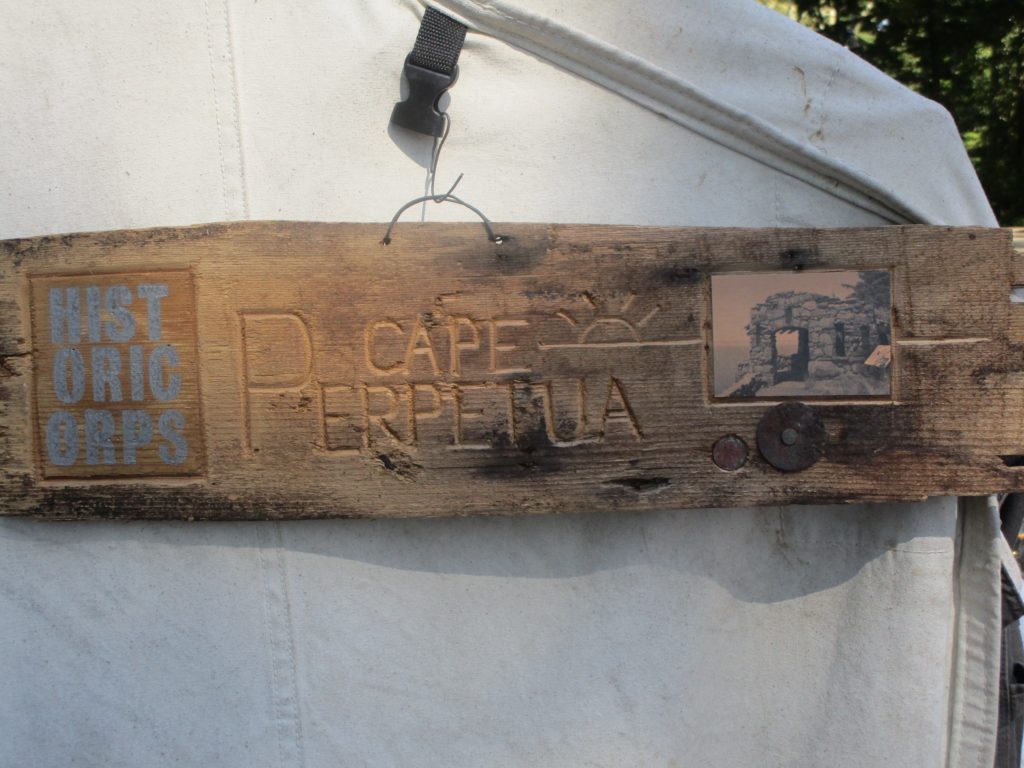
Not quite like outdoor camp
Each project has its challenges and rewards.
At Cape Perpetua, volunteers often stop for a moment to scan the brilliant blue ocean for whales. A morning that starts in rain gear ends up with sunny skies and T-shirts.

Each day starts at 7 a.m. when volunteers crawl out of their tents or RVs to a full breakfast that Greenhouse has prepared. At 8 o’clock they group together to stretch sore muscles and talk about work safety. Depending on the afternoon work, dinner is served between 5-6 p.m. Most folks find their sleeping bags by nightfall. At their makeshift campground atop Cape Perpetua, there is no water, no showers and only one Forest Service outhouse.
Work on the Cape Perpetua shelter also has a degree of difficulty not seen in many other HistoriCorps projects. The structure is small, so volunteers crowd in to tackle chores, struggling to stay out of each others’ way. The shelter is also 300 yards from camp headquarters, meaning everything big and small has to be lugged to and from the work site. And, then there’s the fact that it’s on the edge of a cliff 800 feet above the ocean.
Harris, 72, a retired contractor who normally does 4-6 HistoriCorps projects a year, has worked on some projects that allow people to park their vehicles right next to the job. Others he’s had to hike for six miles and have materials ferried in by helicopter, pack mules or boats.
“There’s been some places where we show up and there’s a foot of snow on the ground … and you just keep working,” said Olson.
Ron and Donna Moses came from Phoenix, Ariz. to work on the shelter — their eighth HistoriCorps project. Ron Moses, 72, said this project has special meaning to him because two of his uncles worked in the CCC “and this helps create a connection” to his grandfather. He also wants to pass along the importance of historic buildings to the public, to governments but especially to people like second-week volunteer Emily Long, a 29-year-old recreation employee with the Willamette National Forest who is pursuing a masters degree at Oregon State University.
“This is our heritage … and we need to be reminded of that and I really want to pass along this ethic,” Moses said, nodding to Long as she attached purlins to the shelter roof.
Long squeezed in her volunteering by taking a week off work and before fall-term classes begin at OSU.
“A big motivation for me are public lands, especially the Forest Service,” Long said. “So it’s important to me to learn appropriate preservation techniques instead of just bulldozing something down. Historic preservation is attention to detail … setting aside modern advances to do something the old-fashioned way.”
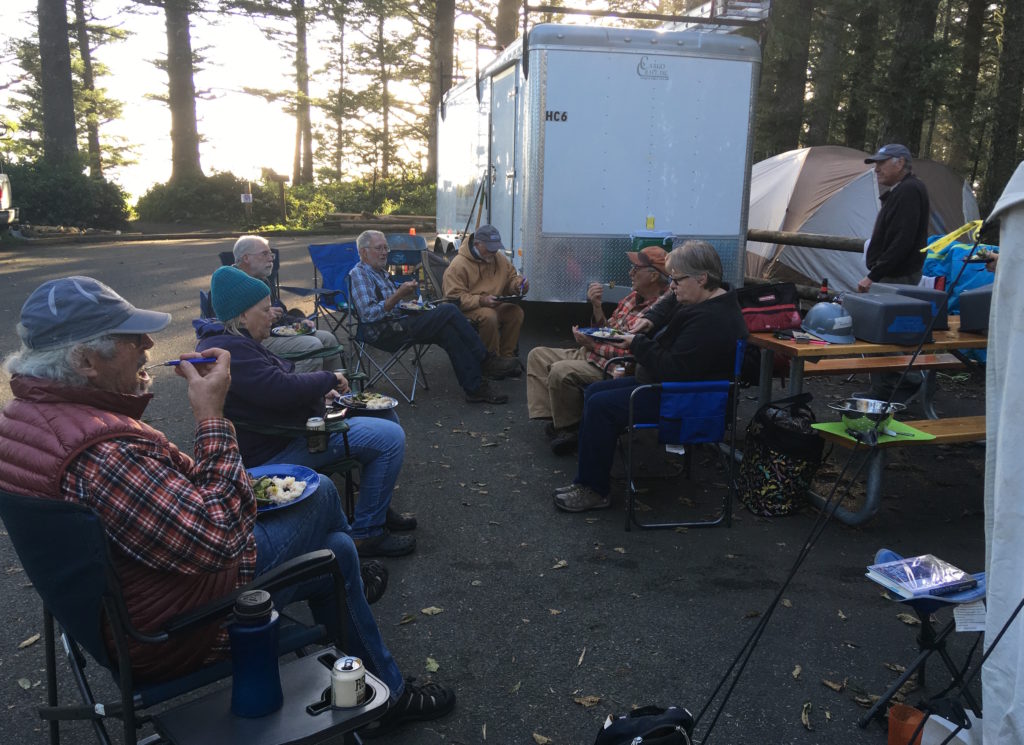
Monday, Sept. 16
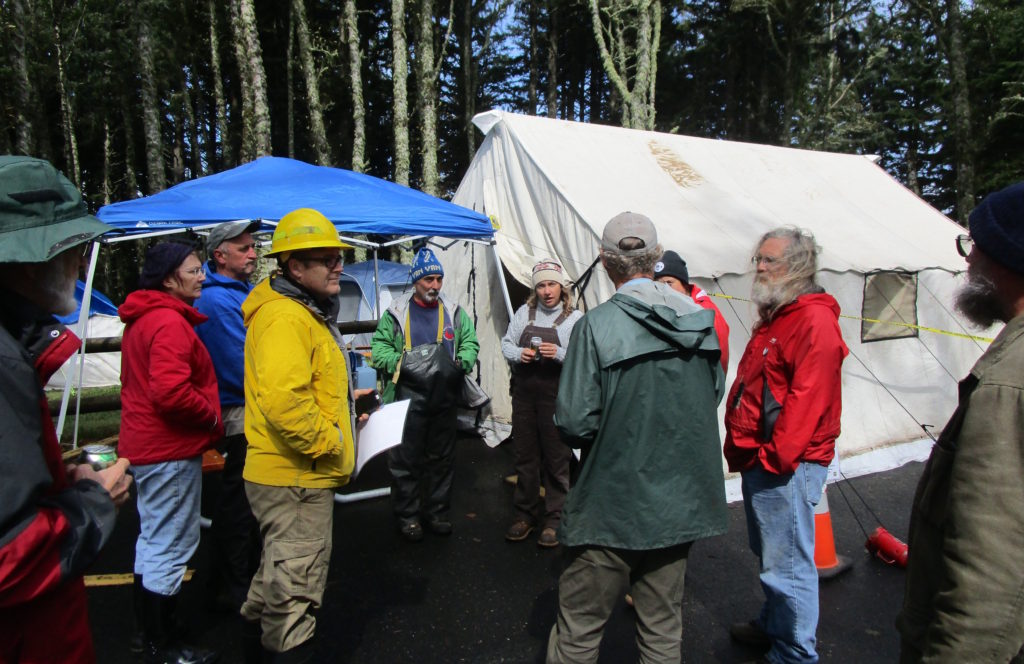
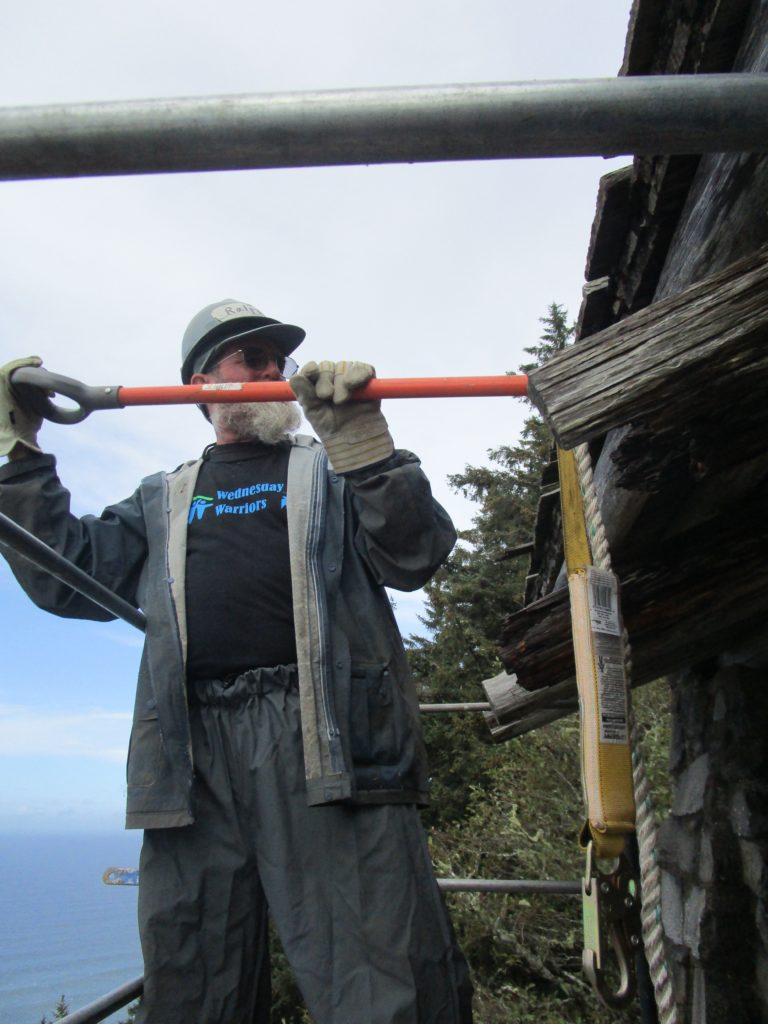
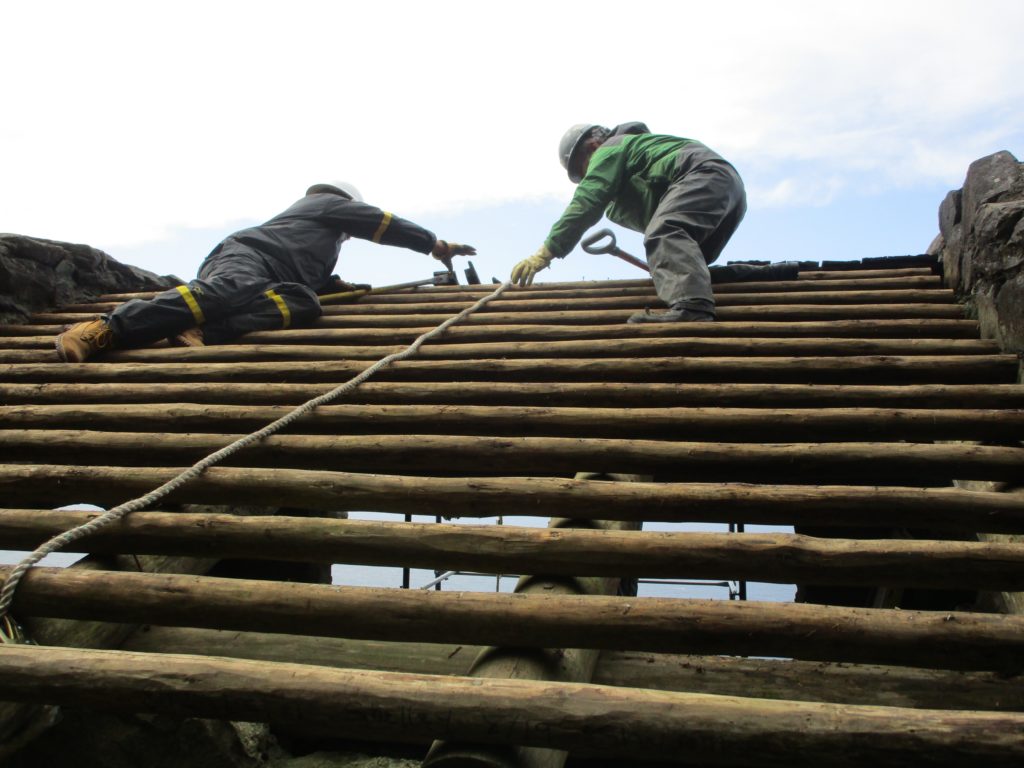
Tuesday, Sept. 17
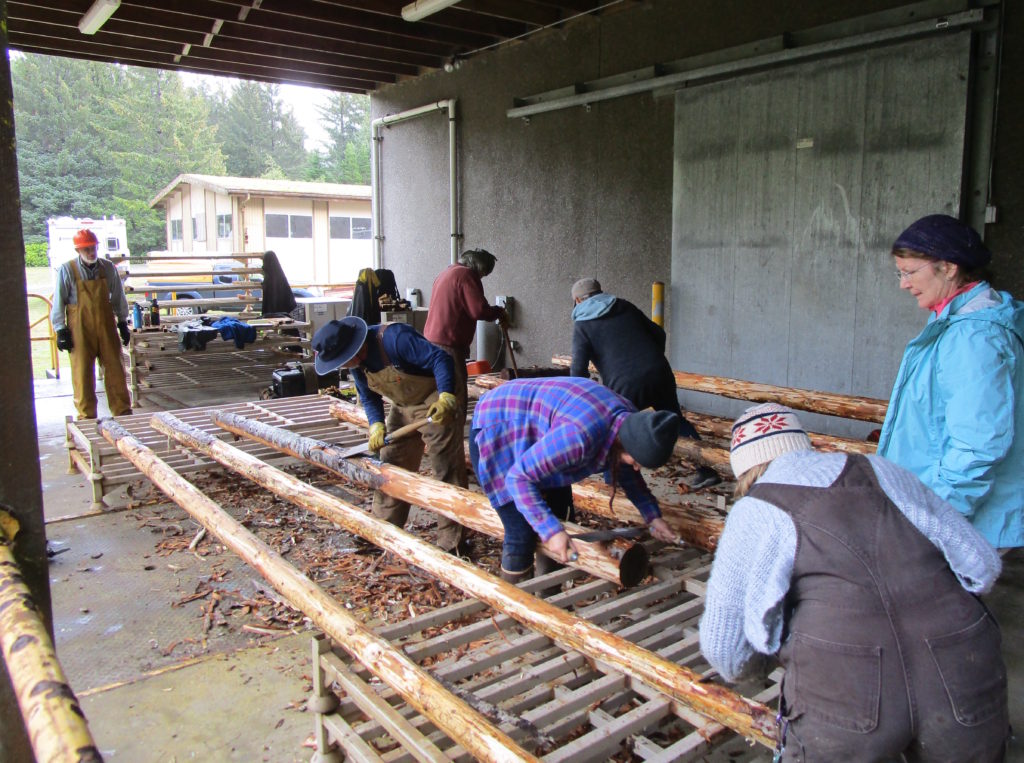
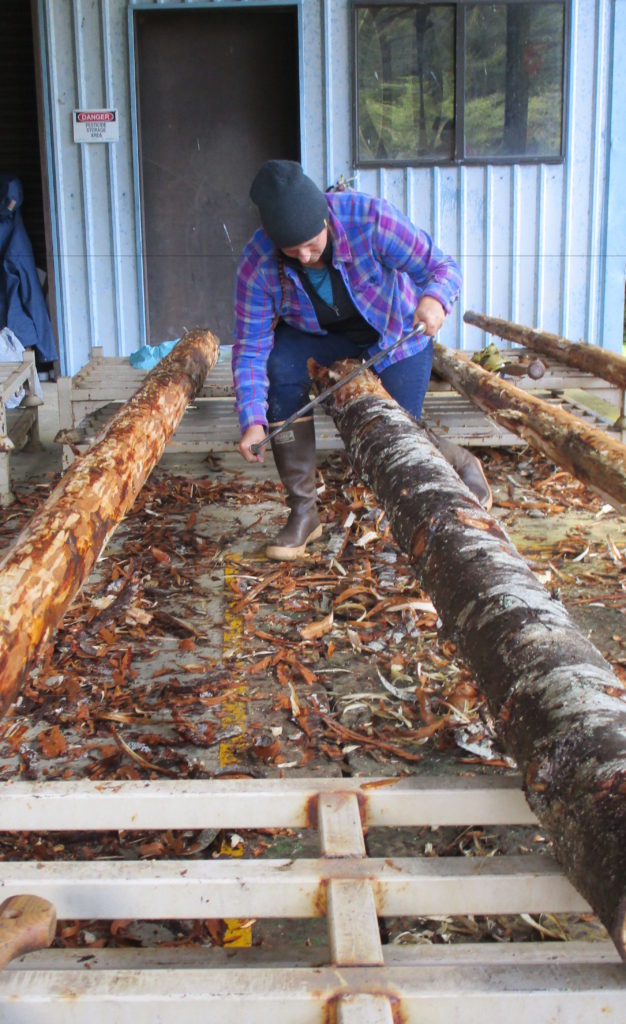
Wednesday, Sept. 18
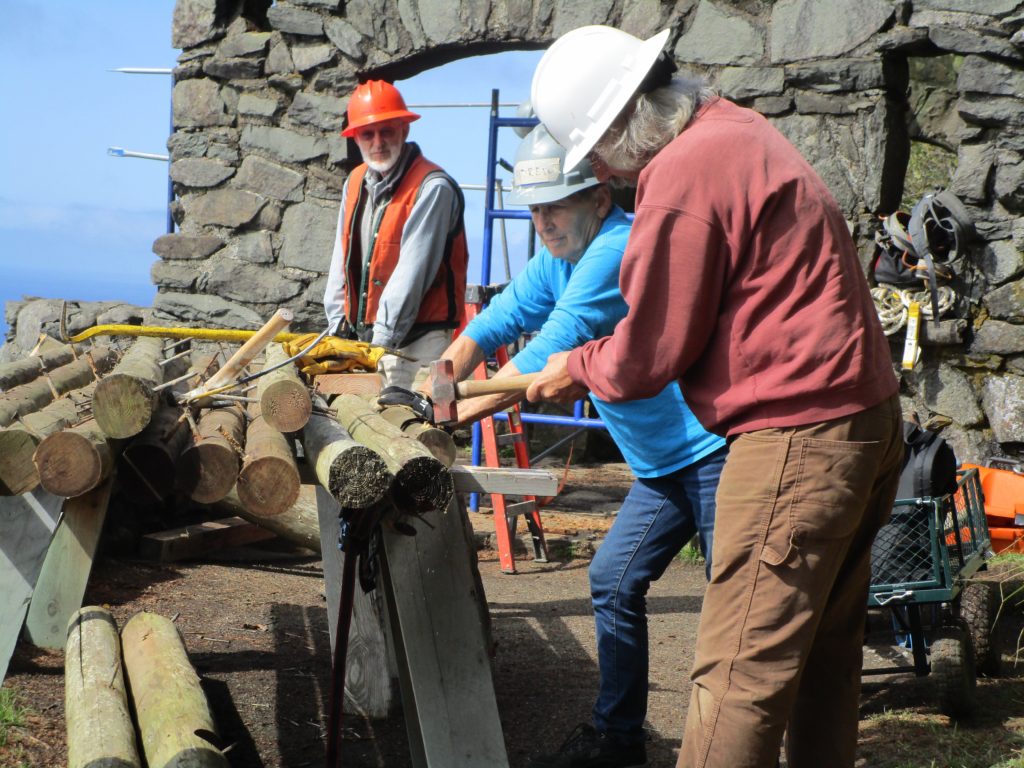
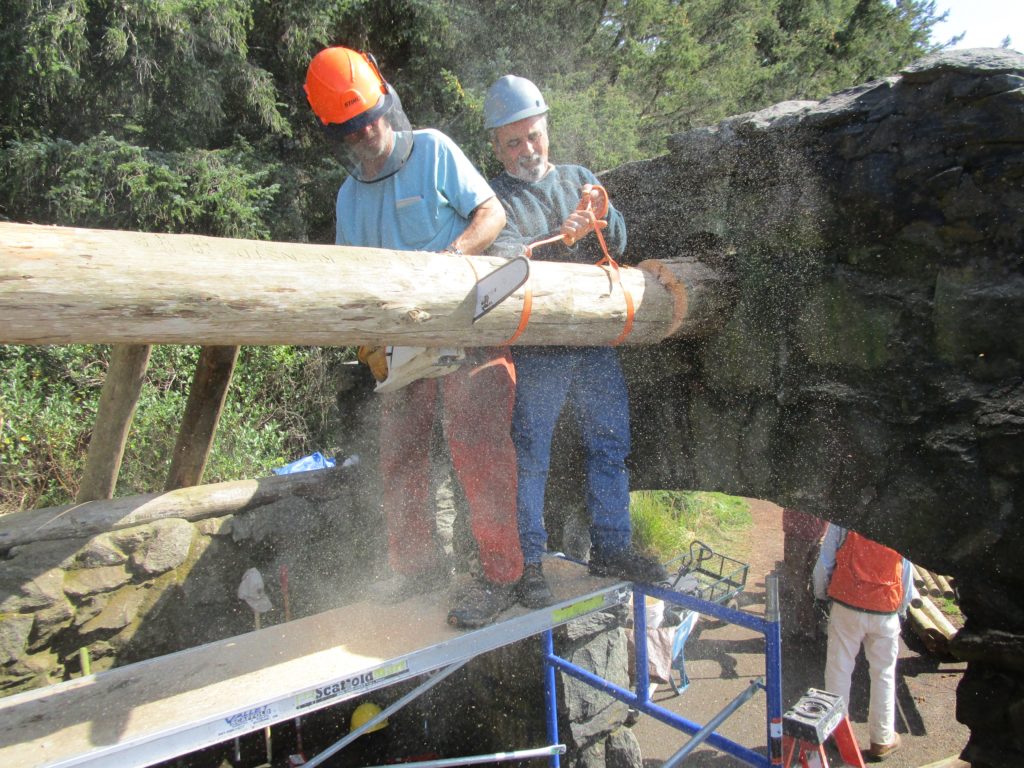
Thursday, Sept. 19
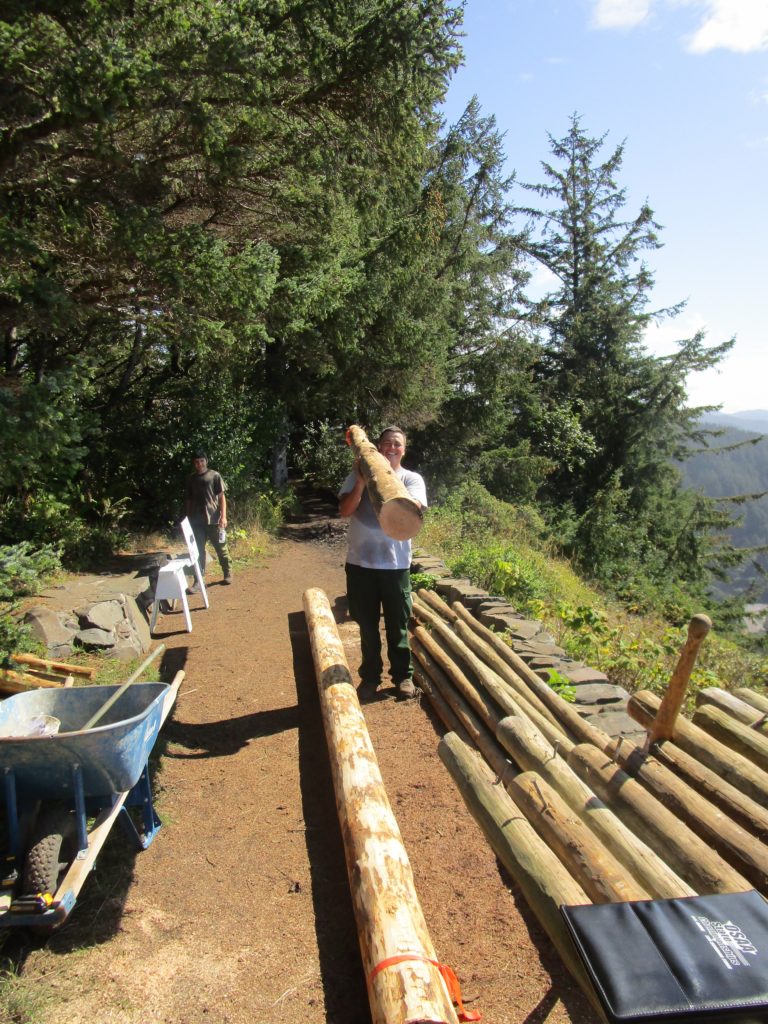
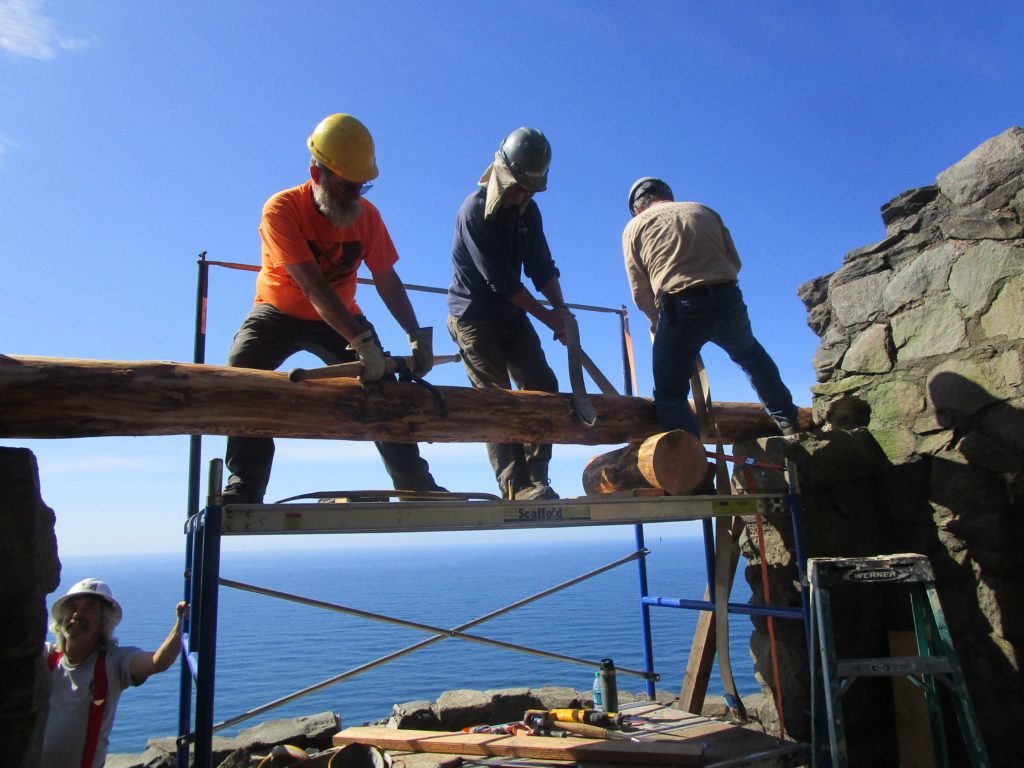
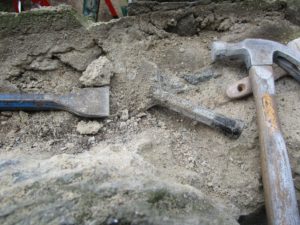
Friday, Sept. 20
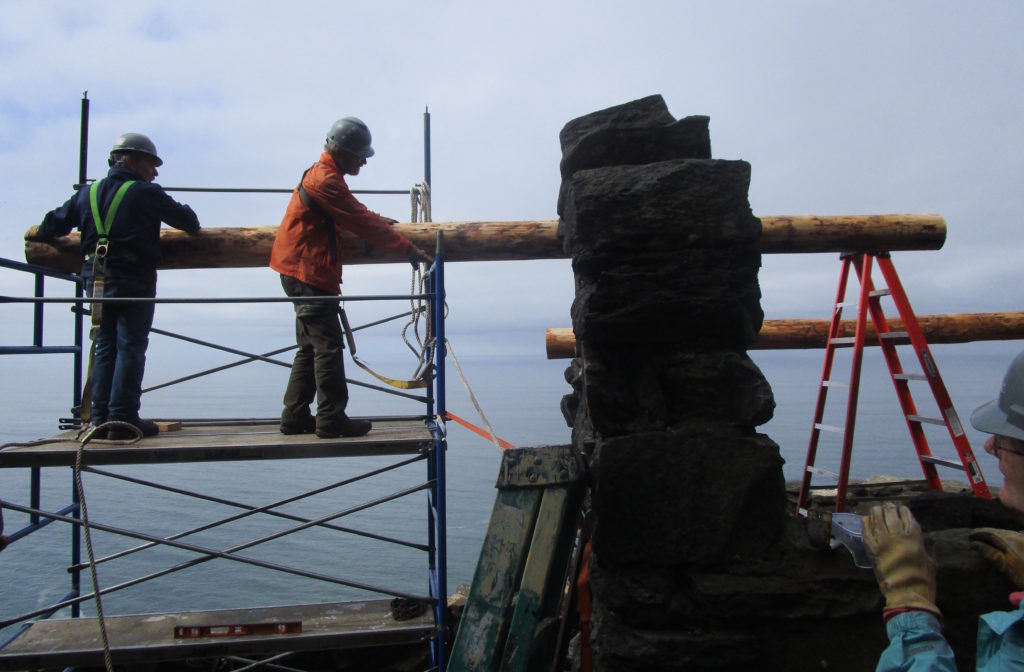
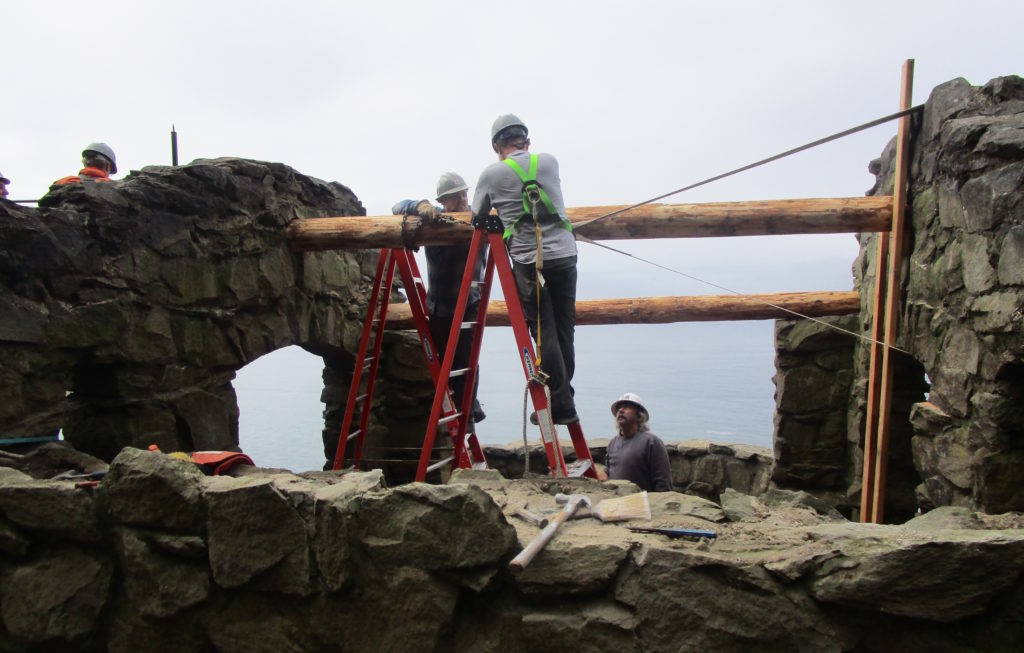
Monday, Sept. 23
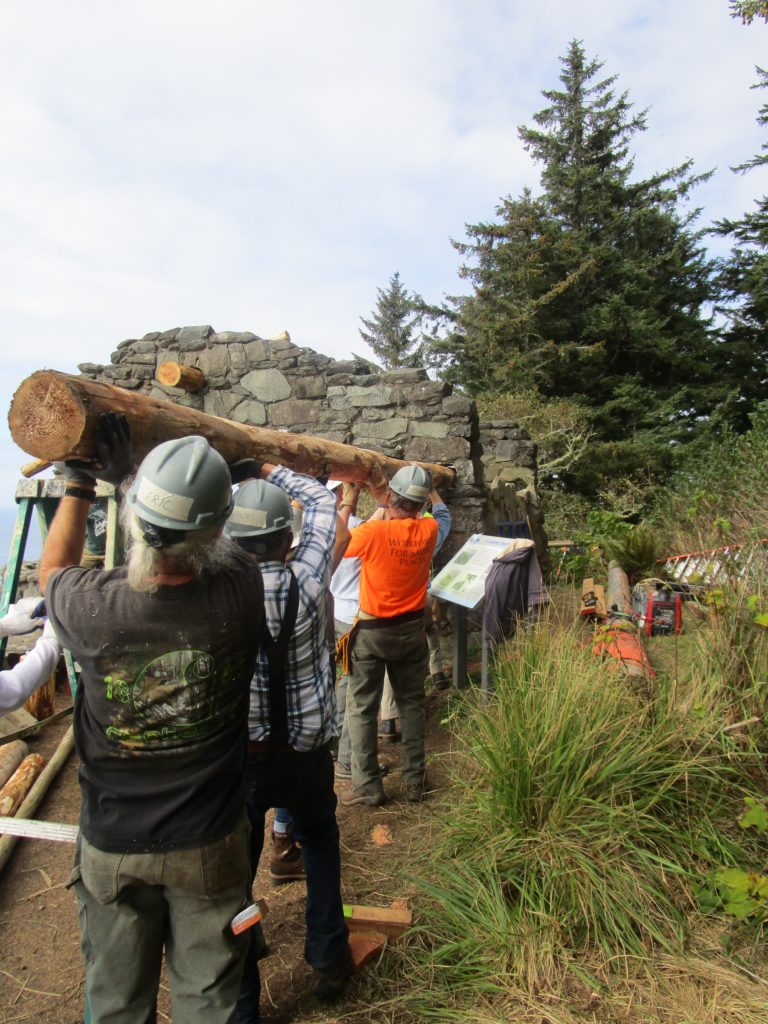
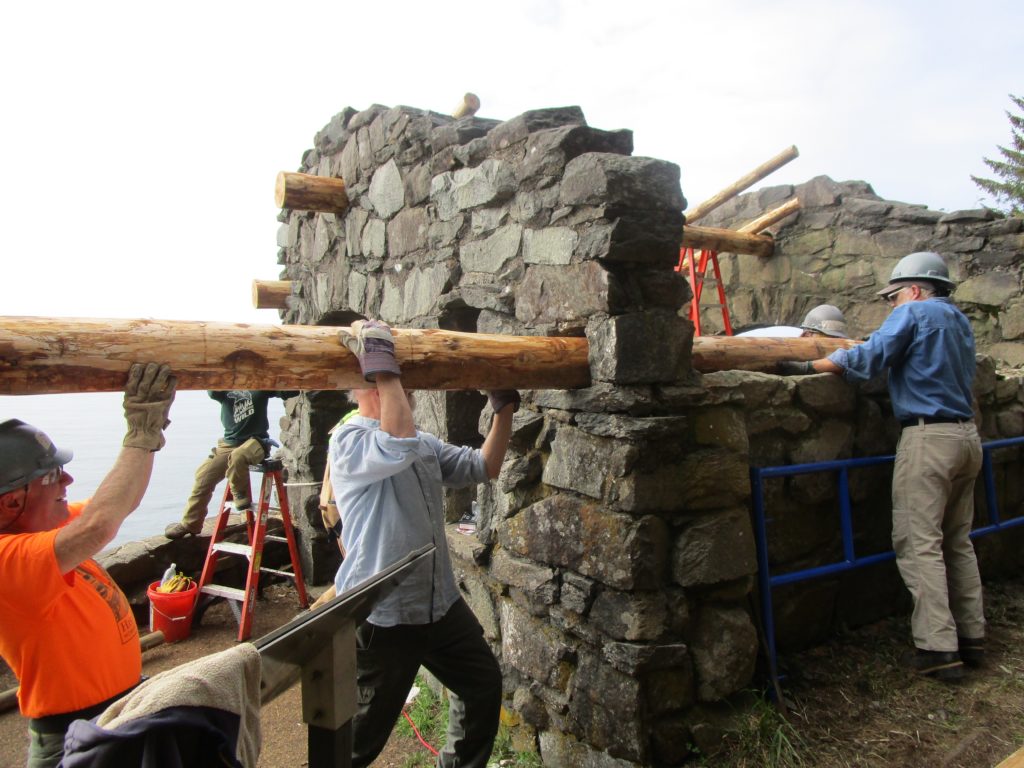
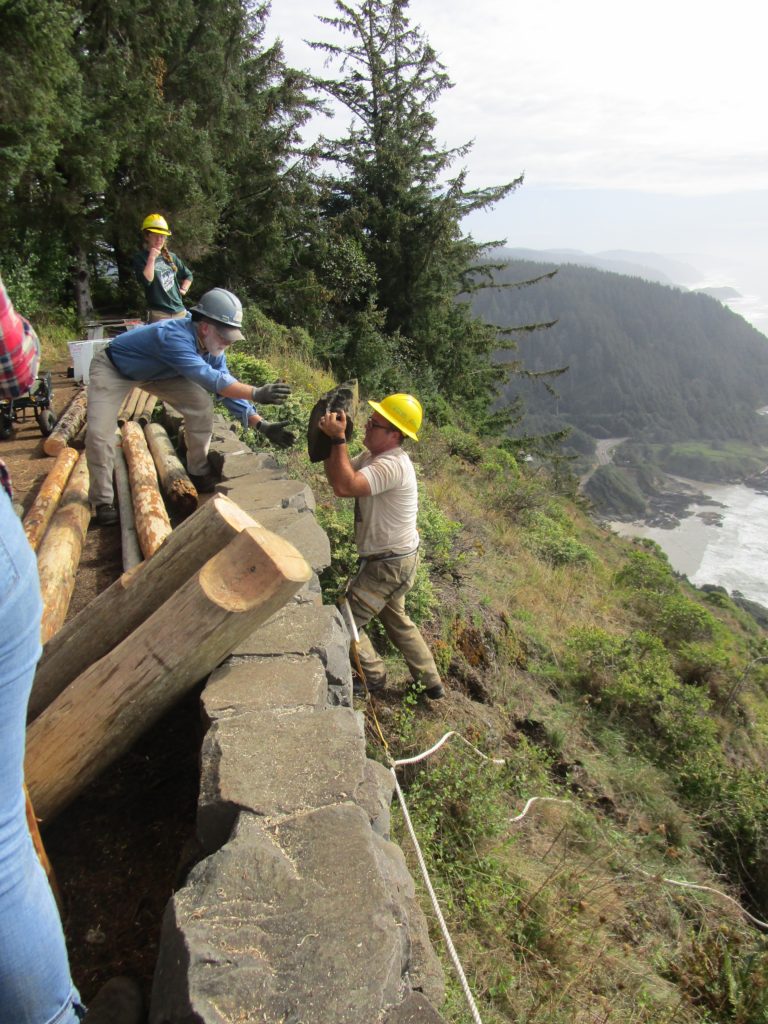
Tuesday, Sept. 24
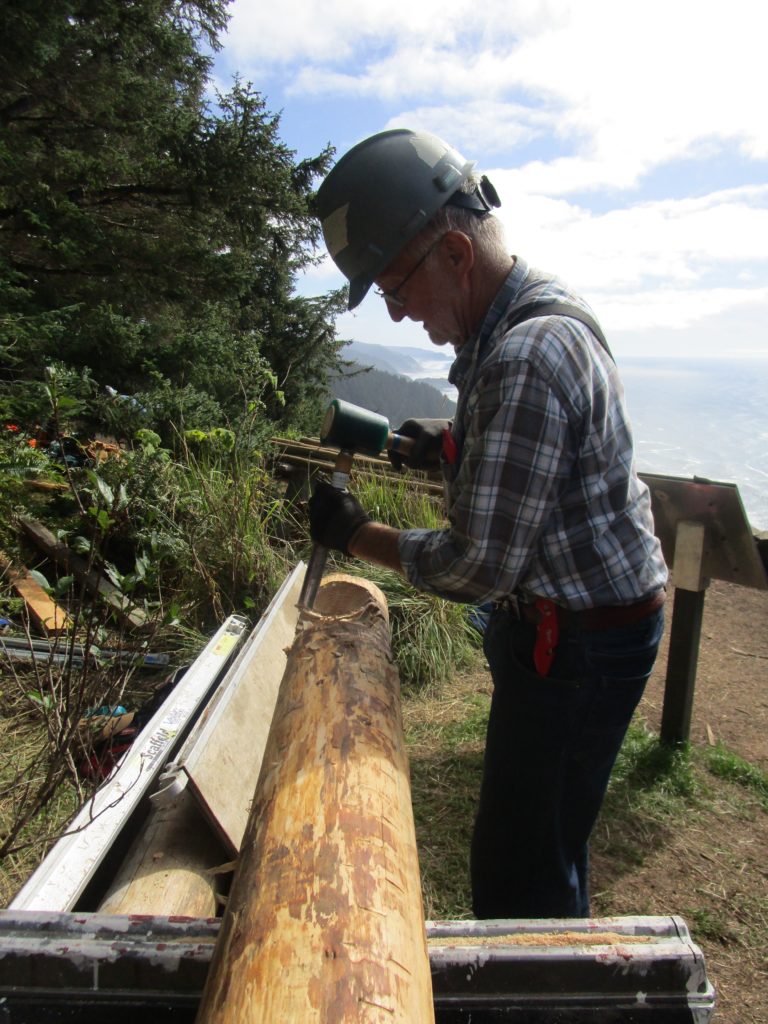
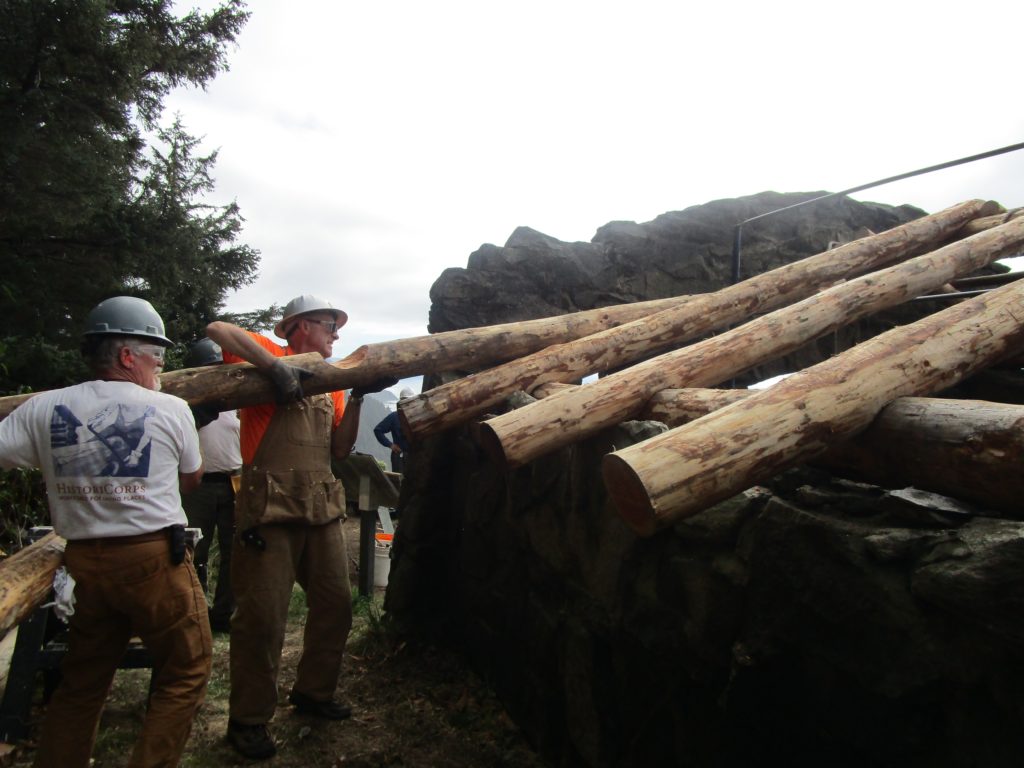
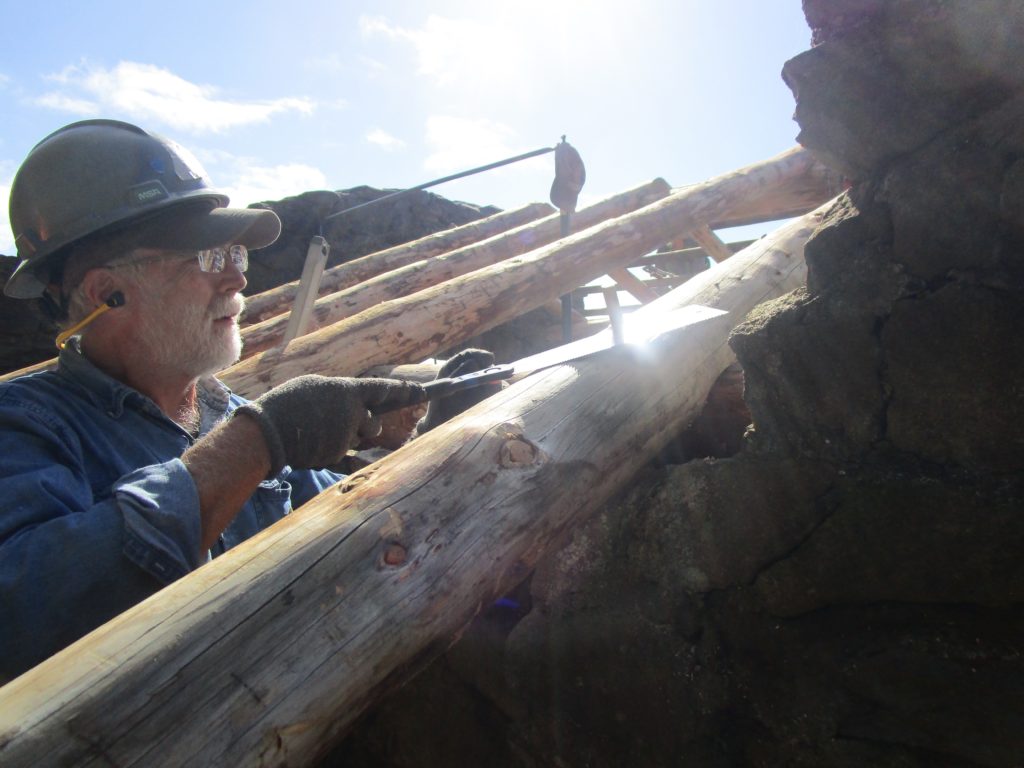
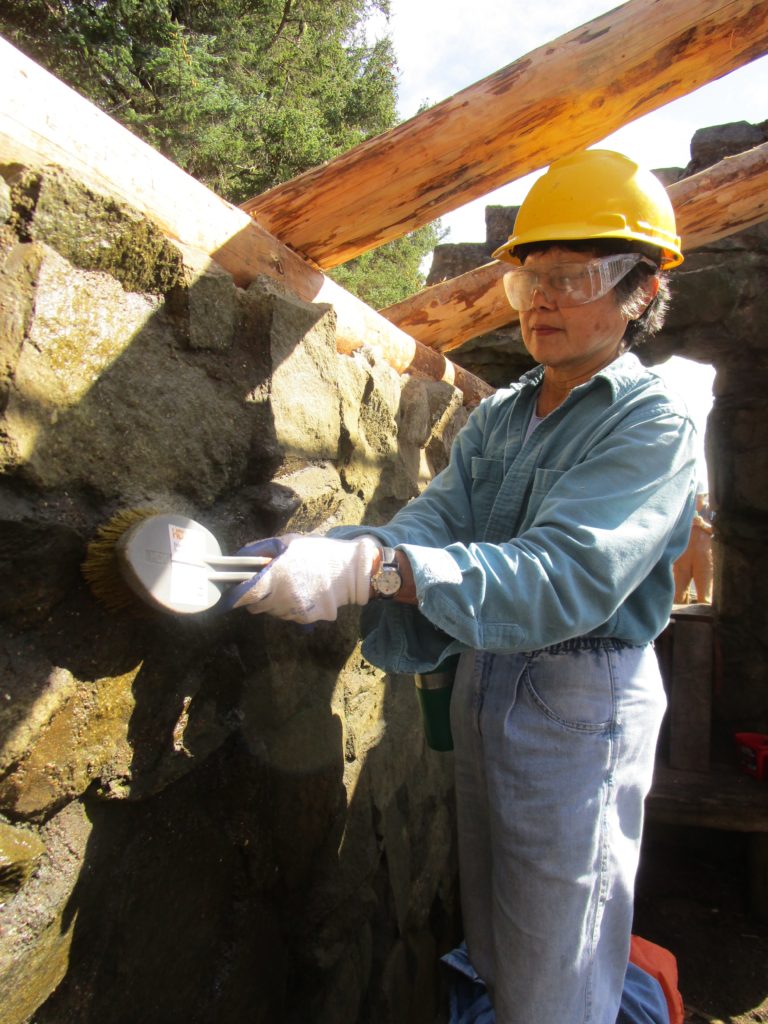
Wednesday, Sept. 25
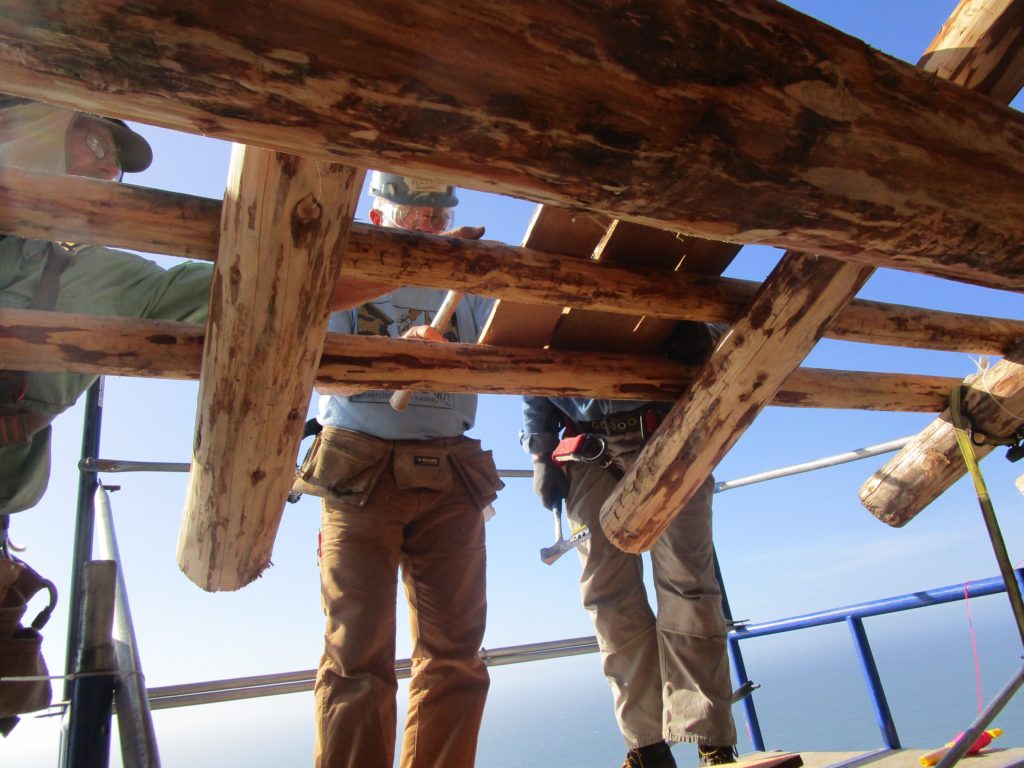
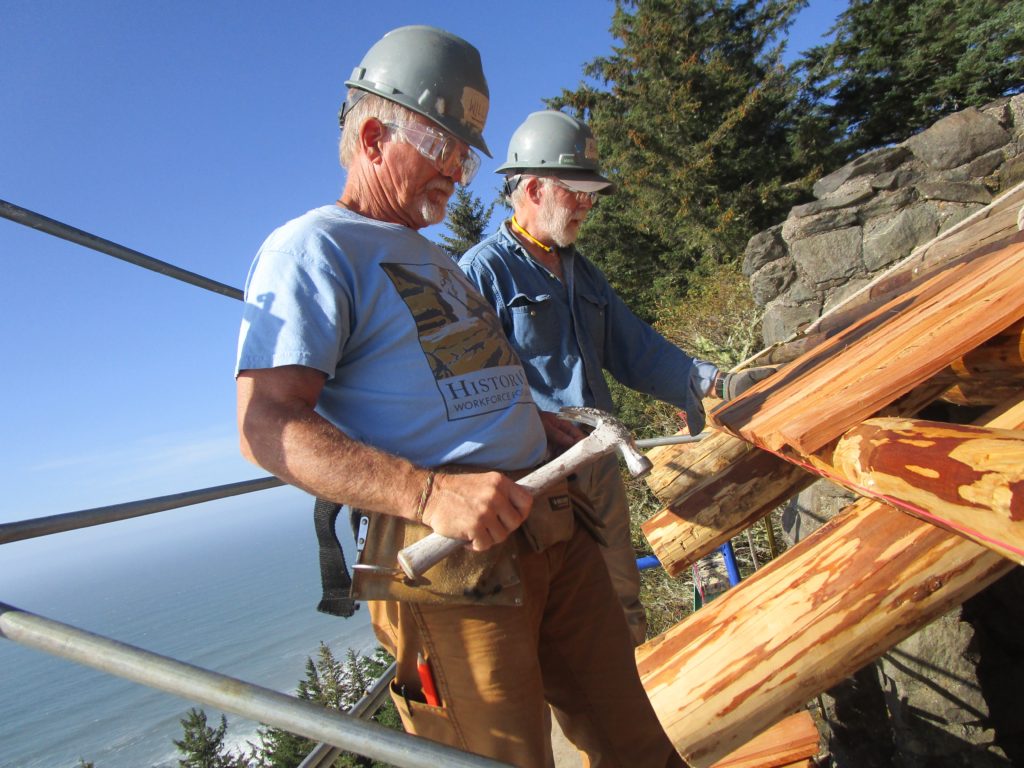
Thursday, Sept. 26
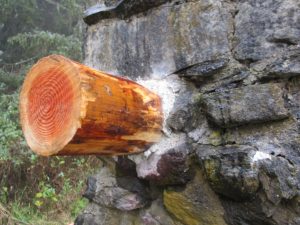
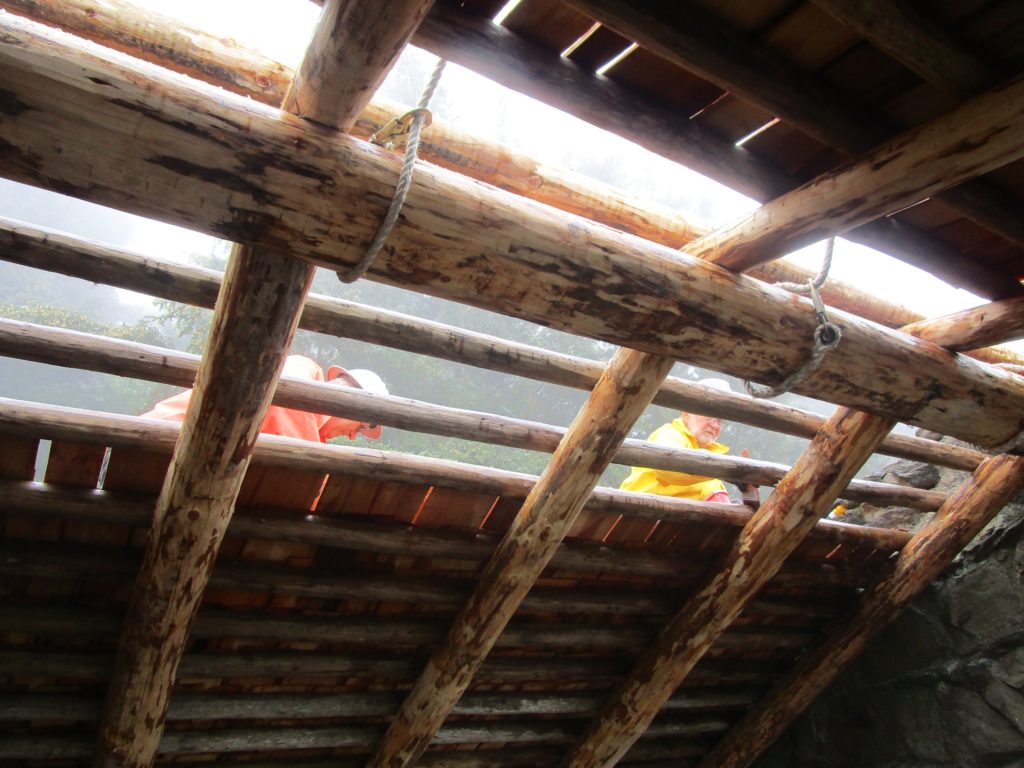
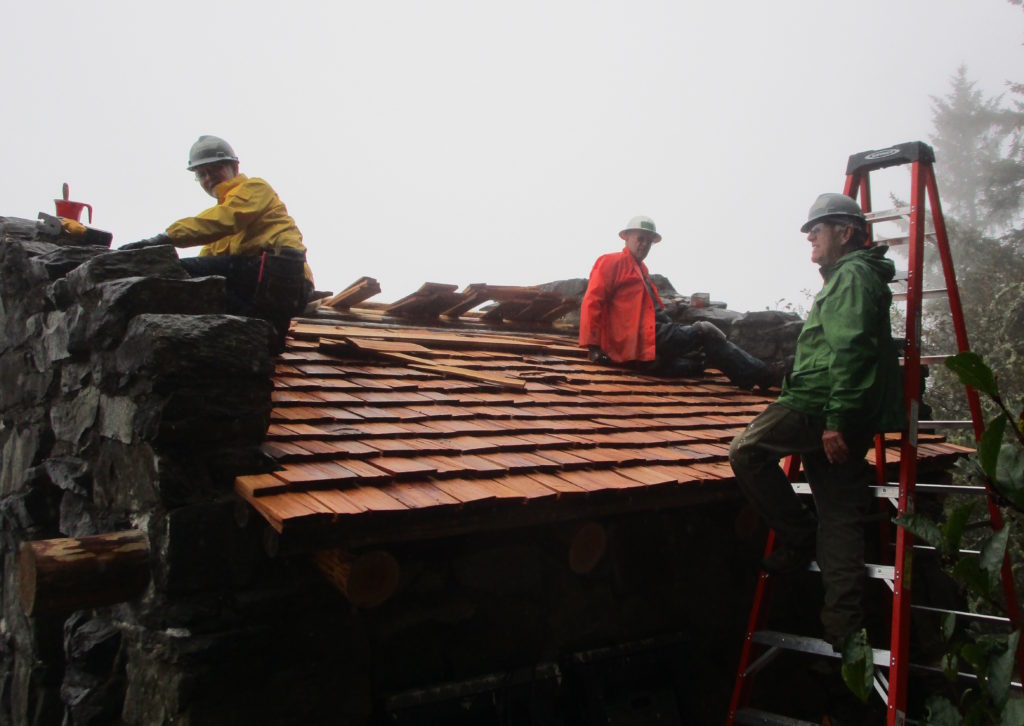



Fabulous report, Quinton. Well written with thorough visual documentation! Good thing I didn’t make one of my frequent visits to the West Shelter over the past few days!
Thank you Quinton for this excellent article.
The West Shelter is one of the most spectacular views on the Oregon Coast. It is wonderful that such a historical structure remains for another generation to enjoy.